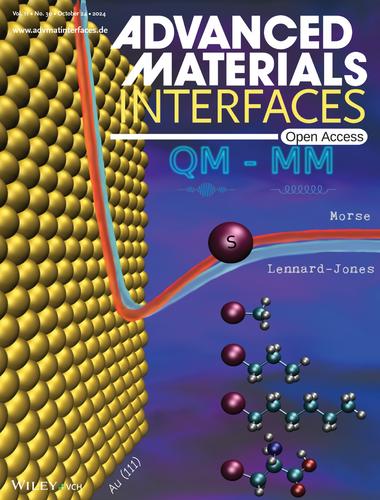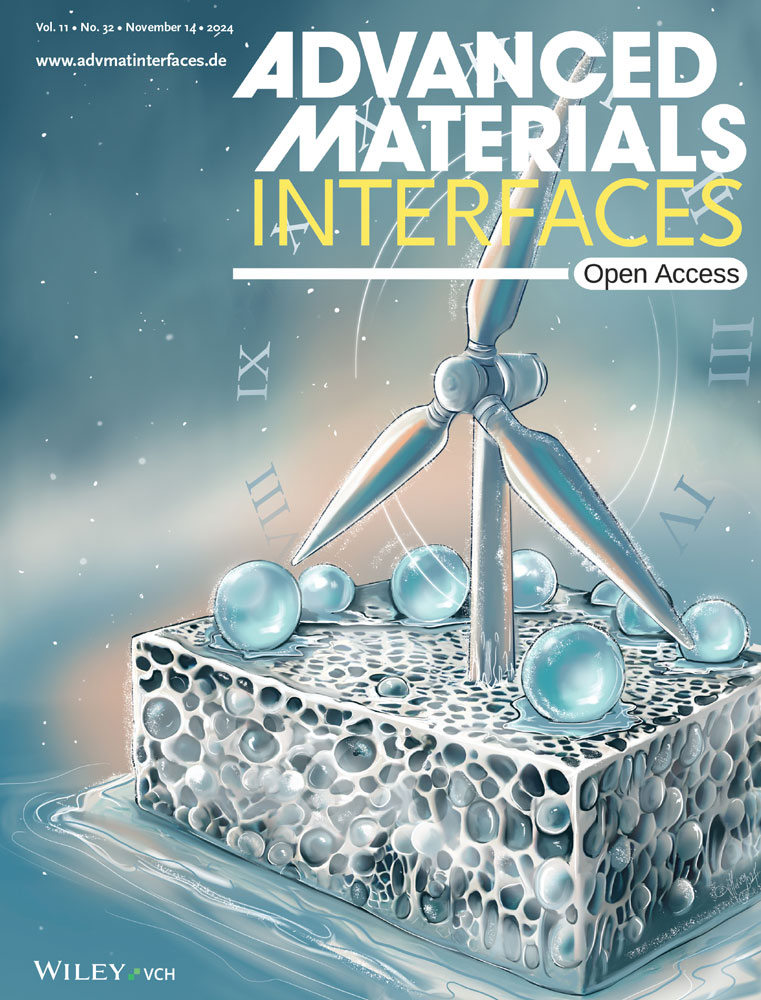量子力学衍生(VdW-DFT)可转移伦纳德-琼斯电位和莫尔斯电位用于模拟半胱氨酸和烷硫醇在金(111)上的吸附(Adv.)
IF 4.3
3区 材料科学
Q2 CHEMISTRY, MULTIDISCIPLINARY
引用次数: 0
摘要
表面能在第 2400369 号文章中,Rubén Pérez、Guilherme Vilhena 及合作者确定了 PBE+D3 作为硫醇在金(111)上吸附的最佳 DFT 方法。它为 Au(111)-S 界面引入了新的 Morse 和 Lennard-Jones 参数,与流行的力场和 MD 引擎兼容,为深入了解这一关键的金-硫界面的动力学提供了依据。本文章由计算机程序翻译,如有差异,请以英文原文为准。

Quantum Mechanical Derived (VdW-DFT) Transferable Lennard–Jones and Morse Potentials to Model Cysteine and Alkanethiol Adsorption on Au(111) (Adv. Mater. Interfaces 30/2024)
Surface Energy
In article 2400369, Rubén Pérez, Guilherme Vilhena, and co-workers identifies PBE+D3 as the optimal DFT method for thiol adsorption on Au(111). It introduces new Morse and Lennard-Jones parameters for the Au(111)-S interface, compatible with popular force fields and MD engines, offering deeper insights into the dynamics of this crucial Gold-Sulfur interface.
求助全文
通过发布文献求助,成功后即可免费获取论文全文。
去求助
来源期刊

Advanced Materials Interfaces
CHEMISTRY, MULTIDISCIPLINARY-MATERIALS SCIENCE, MULTIDISCIPLINARY
CiteScore
8.40
自引率
5.60%
发文量
1174
审稿时长
1.3 months
期刊介绍:
Advanced Materials Interfaces publishes top-level research on interface technologies and effects. Considering any interface formed between solids, liquids, and gases, the journal ensures an interdisciplinary blend of physics, chemistry, materials science, and life sciences. Advanced Materials Interfaces was launched in 2014 and received an Impact Factor of 4.834 in 2018.
The scope of Advanced Materials Interfaces is dedicated to interfaces and surfaces that play an essential role in virtually all materials and devices. Physics, chemistry, materials science and life sciences blend to encourage new, cross-pollinating ideas, which will drive forward our understanding of the processes at the interface.
Advanced Materials Interfaces covers all topics in interface-related research:
Oil / water separation,
Applications of nanostructured materials,
2D materials and heterostructures,
Surfaces and interfaces in organic electronic devices,
Catalysis and membranes,
Self-assembly and nanopatterned surfaces,
Composite and coating materials,
Biointerfaces for technical and medical applications.
Advanced Materials Interfaces provides a forum for topics on surface and interface science with a wide choice of formats: Reviews, Full Papers, and Communications, as well as Progress Reports and Research News.
 求助内容:
求助内容: 应助结果提醒方式:
应助结果提醒方式:


